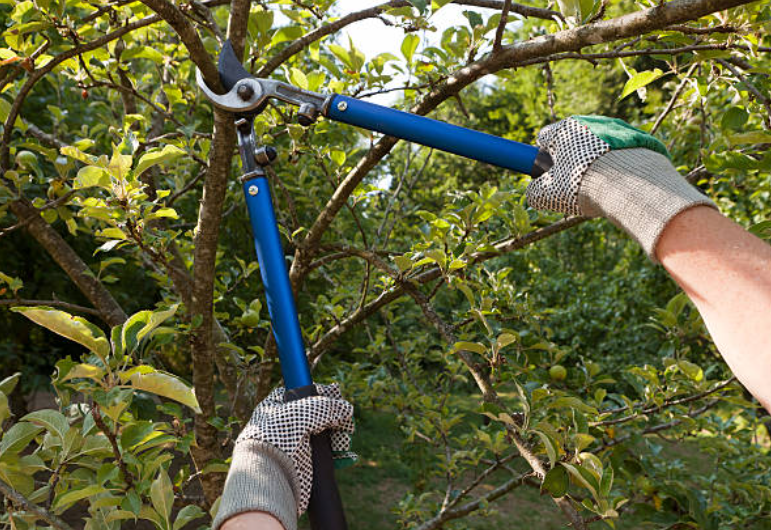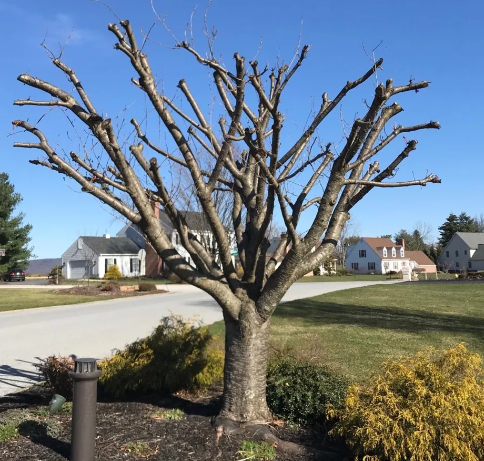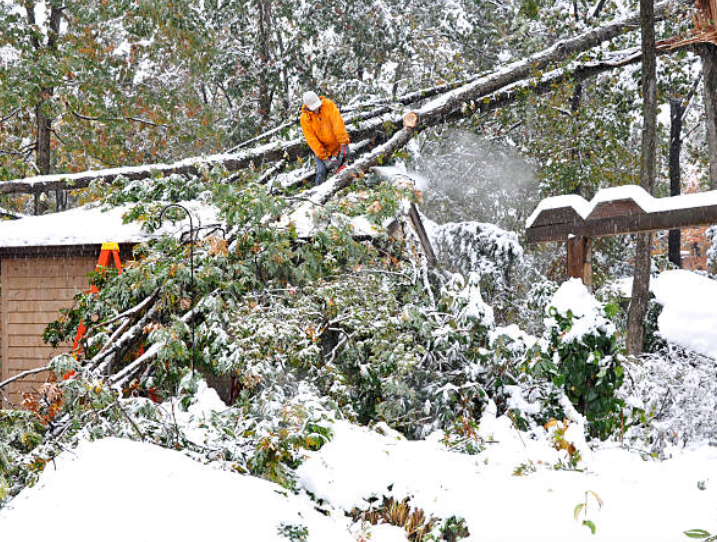Benefits of Pruning Young Trees
In the realm of arboriculture, tree pruning stands as a pivotal practice, especially when nurturing the growth of young trees. This selective branch removal technique is instrumental in shaping and fortifying young trees, fostering their health and structural development. Targeted pruning not only encourages the emergence of new shoots but also safeguards against potential issues. Recognizing the unique significance of tree pruning for young trees is paramount. It sets the foundation for their optimal growth, ensuring not only an aesthetically pleasing outcome but also the long-term vitality and resilience of these burgeoning natural assets.
Does Pruning Encourage New Growth?
Pruning emerges as a transformative practice for the health of young trees, wielding the power to stimulate vigorous new growth. By selectively removing specific branches, this process not only shapes the tree's structure but actively encourages the development of fresh shoots. For young trees, this is particularly instrumental in establishing a robust and well-balanced framework, setting the stage for their future growth. The deliberate removal of excess or poorly positioned branches redirects the tree's energy, fostering the emergence of healthier and more resilient foliage.
In essence, pruning becomes a catalyst for rejuvenation, promoting a denser canopy and enhancing the tree's overall vitality. This careful intervention not only cultivates aesthetic appeal but also ensures that young trees flourish with an abundance of new, strong growth, contributing to their long-term well-being in the natural landscape.
Importance of Pruning Young Trees
Pruning young trees early in their lifecycle is a fundamental aspect of proactive tree care. It lays the groundwork for a well-shaped and resilient structure, guiding the tree's growth trajectory. Early pruning is essential for training the tree to develop a strong central leader and well-spaced branches, preventing potential structural issues as it matures. By addressing competing or crossing branches during the early stages, arborists promote optimal air circulation and sunlight penetration, key factors in young tree health. This preemptive care not only enhances the tree's aesthetic appeal but establishes a solid foundation for a thriving and enduring presence in the landscape.
Proper Way to Prune a Young Tree
Undoubtedly the heart of effective young tree care, mastering the proper techniques for pruning ensures optimal maintenance and robust growth. Pruning young trees demands a strategic approach, emphasizing precision to shape the tree's form while promoting overall health.
The proper way to prune a young tree involves careful selection of branches for removal. Start by identifying and removing dead or damaged branches, redirecting the tree's energy towards healthier growth. Encourage a strong central leader by trimming competing or crossing branches. This practice not only establishes a well-balanced structure but also reduces the risk of structural weaknesses as
the tree matures.
Timing is crucial. Performing pruning during the dormant season, typically late winter to early spring, minimizes stress on the tree. Proper tree trimming cuts, made just outside the branch collar, facilitate quick healing and prevent disease ingress. As young trees are more susceptible to stress, adopting these techniques ensures minimal impact while maximizing the positive outcomes of pruning. Incorporating these meticulous pruning techniques into young tree care promotes not only aesthetic appeal but also sets the stage for a healthy, resilient, and structurally sound tree, laying the foundation for a flourishing presence in the landscape.
What Happens if You Don't Prune?
Neglecting the essential practice of tree pruning can lead to detrimental consequences for young trees. Without regular pruning, trees may develop crowded and intertwined branches, hindering proper air circulation and sunlight exposure. This can result in an increased risk of diseases, pest infestations, and structural weaknesses. Additionally, the absence of pruning may lead to dead or diseased branches persisting, posing safety hazards. Addressing the consequences of neglect underscores the critical role pruning plays in preserving the health, safety, and longevity of young trees in their formative years.

What Happens if You Prune a Tree Too Early?
Timing is paramount in the art of pruning, and an often overlooked aspect is the risk associated with pruning a tree too early. Early pruning, especially before the dormant season, can expose young trees to increased stress. Premature pruning may disrupt their natural growth cycle, leaving them vulnerable to environmental factors. This untimely intervention can lead to diminished resilience, affecting the tree's ability to combat diseases and pests. By understanding the repercussions of pruning too early, arborists can make informed decisions,
ensuring the health and vigor of young trees are not compromised during their crucial early stages of development.
Seasonal Restrictions on Tree Trimming
Understanding the seasonal nuances of tree trimming is essential for preserving the health and vitality of young trees. Certain months present heightened sensitivity to pruning, and awareness of these seasonal restrictions is crucial. In regions with distinct seasons, it's advisable to avoid tree trimming during late fall and early winter when trees are first entering dormancy. Premature pruning during this period may impede the natural process of hardening off, making young trees susceptible to cold weather damage. Similarly, extreme heat during the peak of summer can stress trees, making them more vulnerable to the impacts of tree trimming.
The best time to prune young trees is typically during the dormant season, which is late winter to early spring. Pruning during this period minimizes stress on the tree and allows for optimal healing. Additionally, pruning during the dormant season helps in shaping the tree's structure, encouraging new growth, and reducing the risk of diseases. However, specific timing can vary based on the tree species and local climate conditions, so it's advisable to consult with local tree trimming experts for precise recommendations.
In conclusion, the art of pruning young trees is a nuanced and essential practice in arboriculture, offering a myriad of benefits for their health and longevity. By understanding the impact of pruning on new growth, overall health, and the significance of early care, arborists can implement precise techniques to shape and fortify young trees. The proper way to prune, considering the timing and adhering to seasonal restrictions, ensures optimal maintenance without undue stress. Neglecting tree pruning can lead to consequences that compromise the tree's form, health, and safety. Therefore, embracing the principles of strategic pruning not only cultivates aesthetic appeal but also establishes a foundation for resilient, well-balanced, and thriving young trees, contributing to the beauty and sustainability of our natural landscapes.
You might also like
Book a Service Today
We will get back to you as soon as possible
Please try again later



